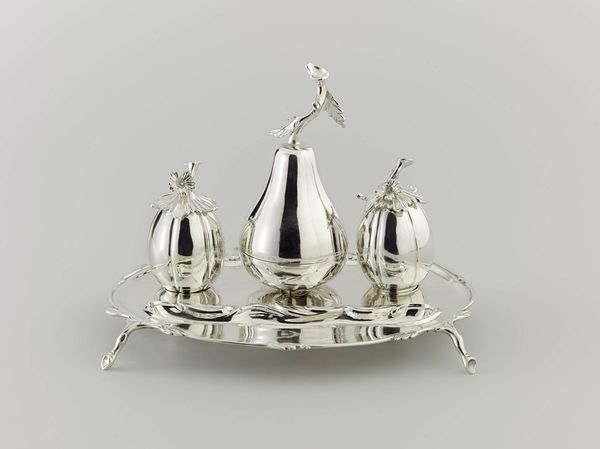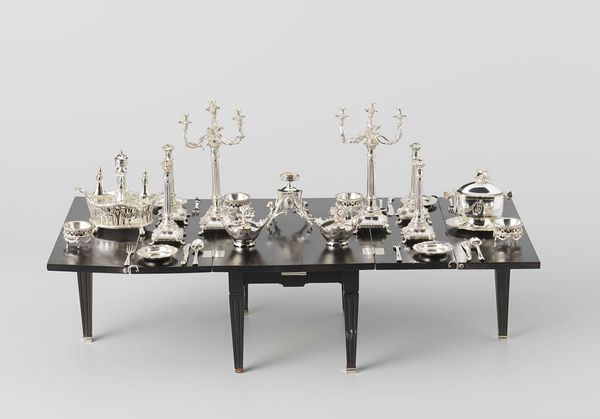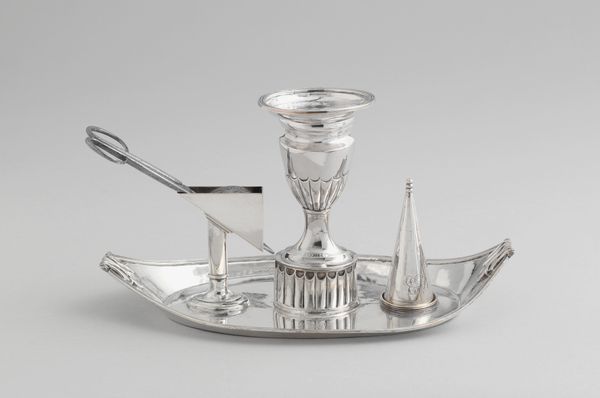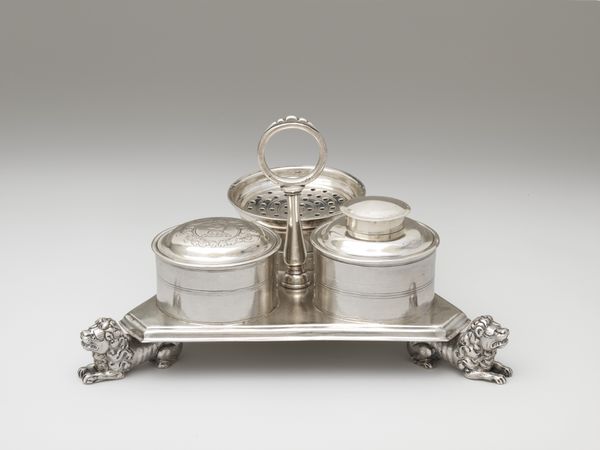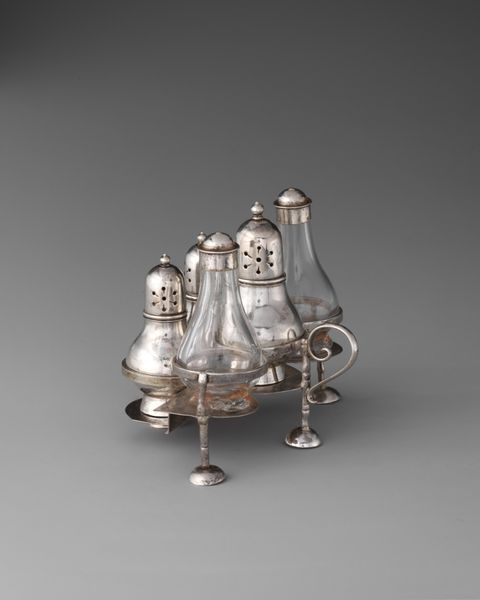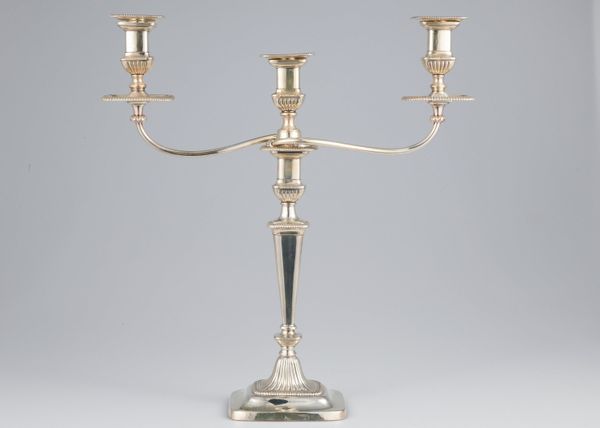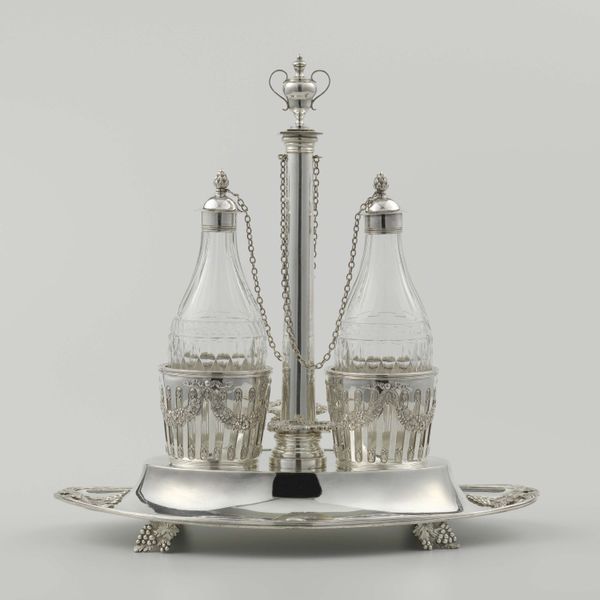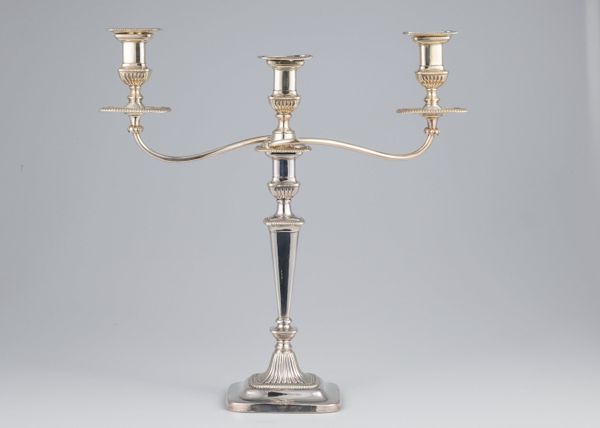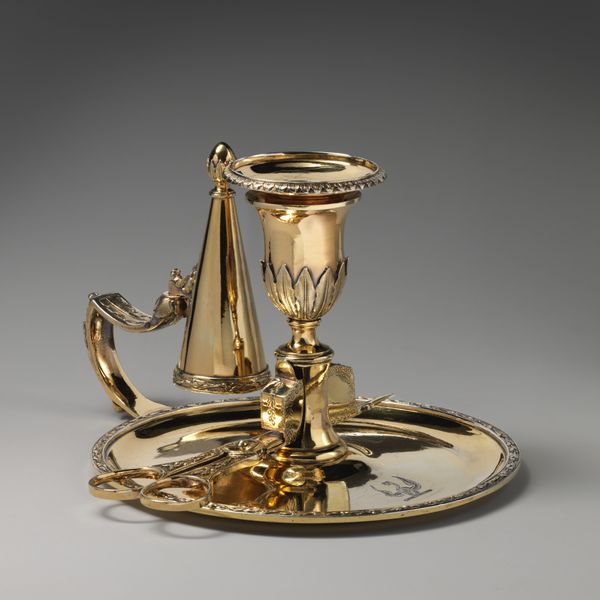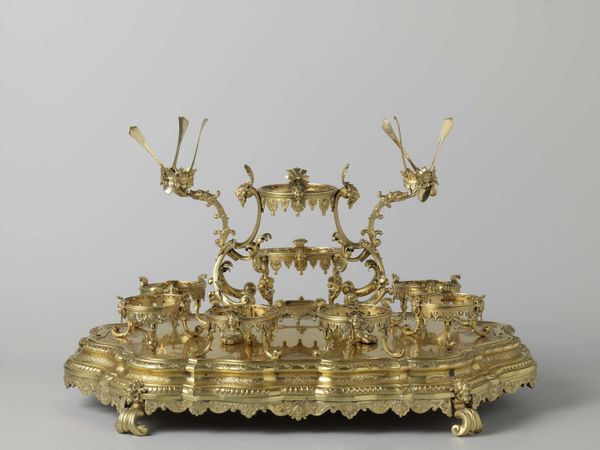
silver, sculpture
#
neoclacissism
#
silver
#
sculpture
#
decorative-art
Dimensions: height 15.8 cm, width 14.3 cm, length 6.3 cm, weight 355 gr
Copyright: Rijks Museum: Open Domain
Editor: This silver salt cellar on a pedestal, made in 1804 by Francois Marcus Simons, strikes me as incredibly ornate, even a bit extravagant for such a mundane object. What’s your take on it? Curator: It speaks volumes about the societal context in which it was created. The neoclassical style, with its emphasis on symmetry and classical motifs, was closely tied to ideas of enlightenment and order. In what kind of setting do you imagine it being used? Editor: I picture it on a formally set dining table, perhaps at a stately dinner party among the wealthy. Curator: Exactly. These were potent symbols of status. Silver, of course, was valuable, and the craftsmanship involved demonstrated wealth and taste. The placement of such an item was also carefully planned to impress guests, underscoring the host's sophistication and social standing. What do you notice about the imagery adorning it? Editor: There are faces around the bowls that hold the salt, and at the very top, above what looks like a lamp, some mythological figurines perhaps? Curator: Precisely. Notice how classical figures evoke a lineage of refined taste and cultural knowledge. The imagery isn't merely decorative, it’s a calculated display of erudition intended for a select audience capable of deciphering these visual cues. Salt was also essential and was associated with status – do you think that matters? Editor: Definitely. Everyone needs it, but presenting it like this transforms everyday need into something… elevated, maybe? It seems to blend utility and aspiration seamlessly. I never thought that a salt cellar could speak about broader cultural values like this. Curator: That's the power of looking at art through a historical lens! Everything communicates something, from materials to intended audience.
Comments
No comments
Be the first to comment and join the conversation on the ultimate creative platform.


